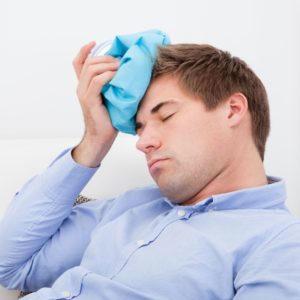Millions of Americans experience frequent headaches. Migraines, and sometimes cluster headaches, may occur with such intensity that one must retreat from their daily activities for a time. The migraines that occur are as unique as each individual who experiences them. They can have multiple triggers and may respond differently to management strategies at different times. This can create challenges for the patient and the provider seeking to help them. Here, we discuss some steps that may expedite the development of an ideal migraine treatment plan.
First Comes a Proper Diagnosis
 Migraines may result from several factors, including a person’s genes, environmental factors such as bright lights, and their nerve pathways and brain chemicals. Migraine headaches may be one of a few subtypes, including episodic migraines, chronic migraines, and migraine with or without aura. These are factors that can help a doctor make an accurate diagnosis.
Migraines may result from several factors, including a person’s genes, environmental factors such as bright lights, and their nerve pathways and brain chemicals. Migraine headaches may be one of a few subtypes, including episodic migraines, chronic migraines, and migraine with or without aura. These are factors that can help a doctor make an accurate diagnosis.
Before treatment planning can occur, the doctor must understand what is happening. Patients help themselves by providing as detailed information as possible to their doctor. Some of the questions a doctor may ask include:
- How often do migraines occur?
- How quickly does the migraine peak in intensity?
- How long do migraines typically last?
- Does nausea occur with headaches?
If you are moving in the direction of seeing a migraine specialist, it may be helpful to keep a diary of your headaches, what precedes them, and their nuances. Also note what helps head pain subside.
A Note about Home Remedies for Migraines
Experts advise migraine sufferers to get ahead of their pain as quickly as possible. There are two potential obstacles with over-the-counter migraine medications. One is that, by the time one realizes they are experiencing a migraine, their digestive system may already be impaired. They may not be able to absorb the medication or, worse, may vomit due to migraine-related nausea and not get the benefit of the drug. Another challenge is that some OTC headache medications contain caffeine and, for some, that is a hidden trigger that exacerbates pain.
Design the Most Effective Treatment for Your Migraines
The general clinical approach to treating migraines is to develop lifestyle strategies to reduce triggers and, when needed, deliver treatment, usually in the form of an injection or pill. For some patients, a prophylactic and acute plan is sufficient. For some, this approach fails. Without satisfactory improvements, many patients become hopeless about finding a viable solution for headache pain. Dr. Lowenstein understands this because he has experienced it himself, which is a leading reason why migraine surgery has become a large part of his Santa Barbara practice. Migraine surgery offers a new path forward for patients who refuse to be controlled by frequent or chronic pain. To learn more about our diagnostic and treatment processes, schedule a consultation at 805.969.9004.

